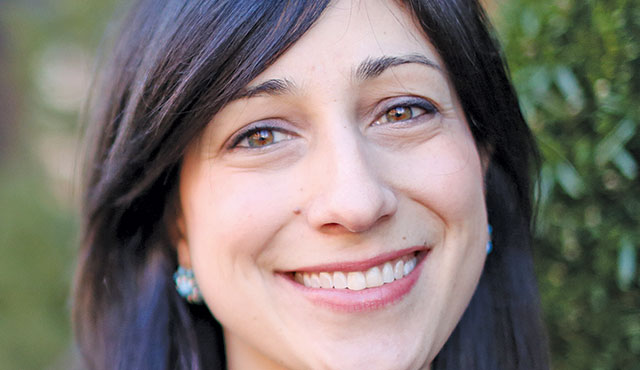My husband and i don’t have cable, a choice made in part to spare ourselves from the punditry served up by cable news shows. However, I was visiting family members who do have cable when the CDC released its updated guidelines indicating that people who have been fully vaccinated could remove their masks while outdoors and in most indoor spaces.
The commentary was predictable: Talking heads debated the scientific basis of the new guidelines; others attributed the shift to political calculations; still others raised skepticism about how we could know who among the maskless were being honest about their vaccination status.
After sifting through the dizzying reactions I saw on television, I realized that I had another take, one born from my experience as the mother of a “COVID baby.” It was one of hopefulness for his future — one filled with face-to-face encounters with fellow human beings.
My son was born in November 2019, just as the novel coronavirus was beginning to spread across the globe. He was merely four months old, having just learned to smile back at us, when we went into lockdown.
By the time that our country is close to being out of the woods of this pandemic, I’ll be introducing two children — him and his newborn brother — to many of my family and friends for the first time.
For the better part of his life, my son has only seen his parents and a small number of friends and family members without masks on our faces. Well-meaning store clerks, pediatricians and other adults all speak to him and show genuine interest in him, but he has largely been unable to parrot back any emotion to them because they are masked.
Children learn emotional expression, regulation and differentiation from watching other people’s facial expressions, beginning in infancy and extending through childhood. Parents of children with autism spectrum disorder know how critical this is to development since their children have difficulty processing and repeating the emotions they observe.
While children mostly learn these skills from the people with whom they spend most of their time, typically their family members, they also learn from other adults, such as those working in daycare facilities, as well as from their peers.
Mask mandates, while implemented with the worthy goal of stopping the spread of COVID-19, might turn out to have some unintended side effects when it comes to children’s emotional development. All of this remains to be seen.
We also know that another generation is experiencing challenges when it comes to face-to-face social interaction, which began well before the coronavirus began to spread. Emerging research suggests that adolescents and young adults are having significant challenges when it comes to interpersonal communication and in-person, face-to-face social interactions.
These difficulties are being linked to the fact that many of them have grown up spending, conservatively, six to nine hours a day on a digital device or screen. They are increasingly “socializing” with peers through social media sites instead of at in-person activities.
As a result, they are having a harder time building friendships, communicating emotional responses to events and reading social cues than older generations. What effect this will have on educational outcomes, marriage and childbearing rates or economic prospects also remains to be seen.
All of this has me thinking about the post-pandemic world in which my son will be raised. I want him to experience the joy of sharing a side-splitting laugh with others, the knowledge that it’s appropriate to cry when things are sad or disappointing and the gift of lifelong friendships that begin in childhood.
I want him to understand what it means that he’ll one day see God face to face and be drawn to such a glorious prospect.
My work is cut out for me. Maybe it starts with shielding him from the unpleasant expressions displayed on cable news. Maybe it will get better when we can wear masks less often. But it most certainly won’t end there.
If we want to give future generations a shot at having the full experience of what it means to be a human being, we’d better put on a good face and, with direction and intention, cultivate that kind of world for them.

